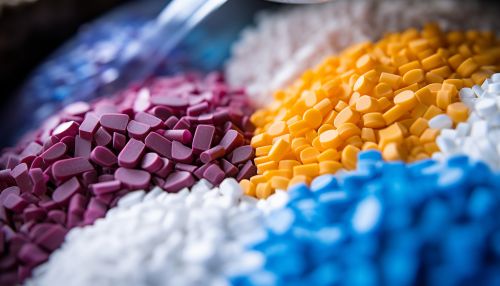The Role of Microbes in Biodegradable Polymer Production
Introduction
Biodegradable polymers are a type of polymer that decompose naturally in the environment by the action of microorganisms. They are gaining attention due to their potential to reduce the environmental impact of plastic waste. A significant role in the production of these polymers is played by microbes, which can produce biodegradable polymers naturally or can be engineered to do so.


Microbes and Biodegradable Polymer Production
Microorganisms, including bacteria, fungi, and algae, are capable of producing biodegradable polymers. These polymers are often referred to as biopolymers due to their biological origin. The most common types of biopolymers produced by microbes are polyhydroxyalkanoates (PHAs) and polylactic acid (PLA).
Polyhydroxyalkanoates (PHAs)
PHAs are a family of biodegradable polymers produced by many bacteria as a form of energy storage. The production of PHAs by bacteria is typically triggered by nutrient limitation in the presence of excess carbon. The most well-known and widely studied member of the PHA family is polyhydroxybutyrate (PHB).
Polylactic Acid (PLA)
PLA is another type of biodegradable polymer. It is produced by certain bacteria and fungi through the fermentation of sugars. PLA is a versatile polymer that can be used in a wide range of applications, from packaging to medical devices.
Microbial Production of Biodegradable Polymers
Microbial production of biodegradable polymers involves the use of microorganisms to produce polymers through fermentation processes. This involves the use of a suitable microbial strain, a carbon source for the microorganisms to convert into the polymer, and optimal conditions for the growth of the microorganisms and production of the polymer.
Microbial Strains
Different microbial strains are capable of producing different types of biodegradable polymers. For example, the bacterium Cupriavidus necator is known for its ability to produce PHAs, while Lactobacillus species are used for the production of PLA.
Carbon Sources
The carbon source used in the fermentation process can influence the type and properties of the biodegradable polymer produced. Common carbon sources include glucose, sucrose, and starch. In recent years, there has been interest in using waste materials as carbon sources, such as agricultural waste or industrial by-products.
Fermentation Conditions
The conditions under which the fermentation process is carried out can also influence the production of biodegradable polymers. Factors such as temperature, pH, and nutrient availability can all impact the growth of the microorganisms and the production of the polymer.
Applications of Microbially Produced Biodegradable Polymers
Microbially produced biodegradable polymers have a wide range of potential applications. These include use in packaging, agriculture, medicine, and more.
Packaging
Biodegradable polymers can be used to create a variety of packaging materials, including films, trays, and containers. These materials can help to reduce the environmental impact of packaging waste.
Agriculture
In agriculture, biodegradable polymers can be used to create films for mulching, seed coatings, and controlled-release fertilizers. These applications can help to improve crop yields and reduce the environmental impact of agricultural practices.
Medicine
In the medical field, biodegradable polymers can be used to create a variety of medical devices, including sutures, drug delivery systems, and tissue engineering scaffolds. These materials can provide benefits such as reduced risk of infection and improved patient outcomes.
Challenges and Future Directions
Despite the potential benefits of microbially produced biodegradable polymers, there are several challenges that need to be addressed. These include the high cost of production, the need for improved properties of the polymers, and the need for further research and development.
Looking to the future, there is potential for the development of new microbial strains and fermentation processes that can improve the production of biodegradable polymers. Additionally, there is potential for the development of new applications for these materials, particularly in the fields of medicine and agriculture.
